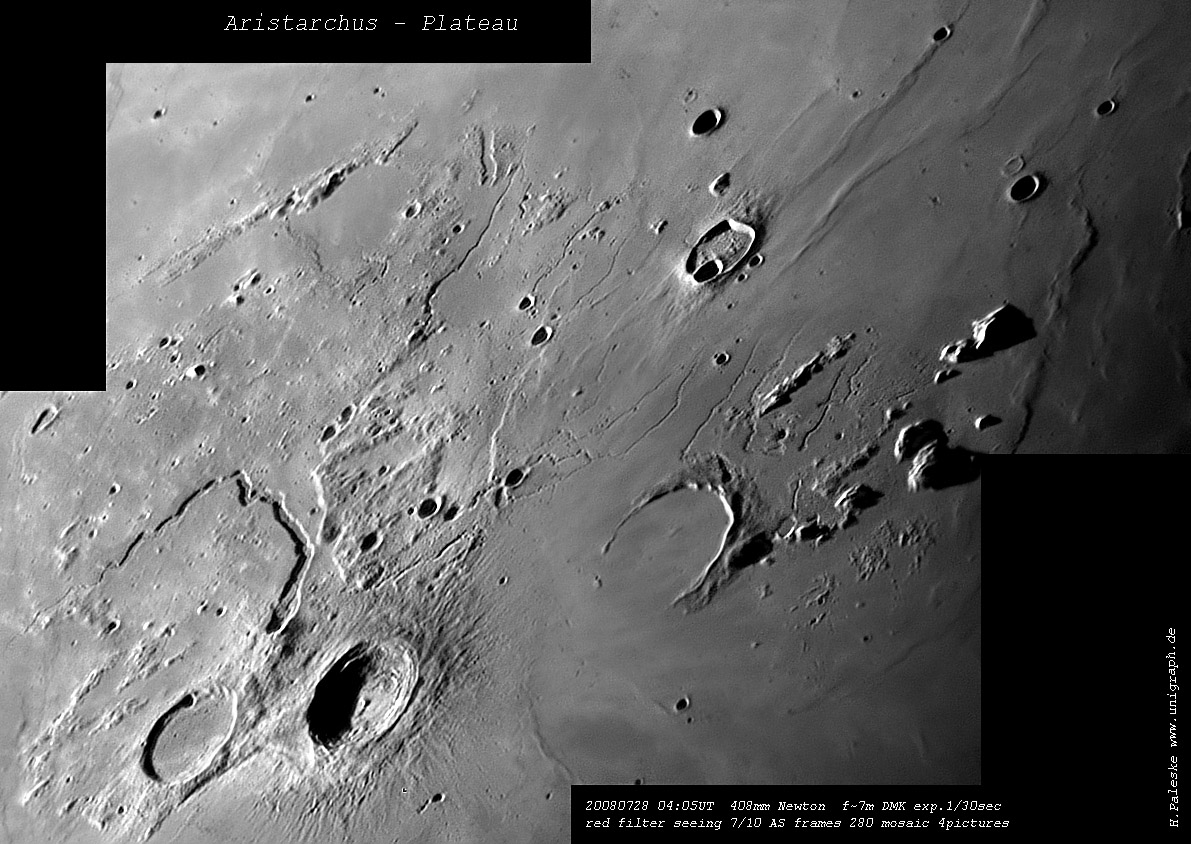January 29, 2018
Aperture
Originally published August 10, 2008

image by Harald Paleske, Langendorf, Germany
Harald is an accomplished observer of the Sun who is just now turning his expertise and new 16" telescope toward the Moon. He has made an exquisite start with this panoramic view of the Aristarchus Plateau and nearby Harbinger Uplift. The rille within Schröter's Valley is clearly captured and there is excellent depiction of the Aristarchus and Prinz rilles. What immediately captured my interest though is the evidence for different ages of lava flows surrounding Prinz and the Harbinger Mountains. The area east of Prinz and within the Harbinger Mountains is darker and more textured than the surrounding smooth region. The lavas between Prinz and Aristarchus are remarkably uncratered and look much fresher than slightly more distant maria. In fact, Harry Hiesinger's crater counting yields a very young age of 1.2 billion years for the smooth lavas, whereas the lavas on the north side of the Harbinger are about 3.5 billion years old. Harald's image also settles a controversy about the existence of a small hill within Prinz - the top of it's lava-buried central peak? This image also makes me think of the unexplained details of the Aristarchus Plateau. The unnamed area just north and slightly west of Aristarchus is rougher and textured differently from the rest of the Plateau. Is this region a continuation of the uplifted pieces of the Harbinger Mountains?
Chuck Wood
Technical Details
408mm Newton f~7m, DMK exp. 1/30sec., Fitswork and Photosphop
Related Links
Rükl plates 18 & 19
Harald's excellent Solar (with Moon coming) website
Yesterday's LPOD: Happy 8/8/8
Tomorrow's LPOD: Red & Blue On the Limb
COMMENTS?
Register, Log in, and join in the comments.



